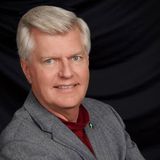
Carlton Owen
When people ask how I’m doing in retirement, my standard answer is, “I used to work 60-70 hours per week for very good pay. Now I work 40-50 hours per week not only for no pay, but everything I do costs me money. And, I’m having a ball.” As a person of faith, I struggle with the developed world’s view of retirement – work 40-50 years and then play golf or hunt and fish for another 20-30. Retirement for those in hard labor roles where the body is nearly worn out at 60-65 is one thing. But, such isn’t the situation for the vast majority of white-collar jobs. And, for our children and their children it will be even more ridiculous. Retire at 62-67 and live another 30+ years!
Colin Moseley, the Chairman of Seattle-based Green Diamond Resources, was Chairman of the Board of my last paying employer – the U.S. Endowment for Forestry and Communities (the Endowment). While Colin was and is just a few years younger than me, he asked about my succession plan for the Endowment. “I have one. It’s just not written down,” I said. He probed further to which I shared that I operated under the “Moses Strategy.” “If you read Genesis, you’ll see that Moses essentially “apprenticed” for 40-years, then led the people of Israel for another 80 years. On the last day of his Earthly life, he climbed a mountain and God took him to heaven.” Colin was the most quick-witted Chairman that I ever had the honor to work with. He said, “You are no Moses. Get us a strategy.”
Thus, we launched a Board-led 18-month process to develop a “written” succession plan. Two things happened during those 18-months. I spent more time thinking about retirement than I had collectively over the prior 60+ years and the COVID pandemic hit and changed the way white-collar professionals did their jobs. (What would have happened if Zoom and Teams had not be available?) With great trepidation I decided to leave the most fulfilling role in a very fulfilling career. My greatest fear as a self-acknowledged workaholic was that without the challenges of my work life, I would suffer depression.
As someone who doesn’t have a lot of hobbies – my vocation and avocation were closely aligned — I opted to continue down a road of engagement on a number of fronts. Service on two small corporate boards (one paid an annual honorarium to a non-profit of the director’s choice; while I had years earlier opted to forego my Board fee for the other and instead had funds directed to my family Donor Advised Fund at the Greenville Community Foundation for later deployment to causes, we wished to support). With another two not-for profit boards and two special projects tied to forestry programs at universities along with a slew of church, family, and home projects, I didn’t and don’t have time to get bored nor depressed.
Two years into “retirement,” I’m as busy as ever but with very little stress and a great sense of accomplishment. In the two years prior to my leaving the CEO role at the Endowment, I had developed and shared a presentation with a number of forest sector groups. I titled it, “The Century of Forests and Forest Products.” In short, my thesis was/is that in a world with 8-billion people the planet and its inhabitants – both human and non-human – need the myriad social, environmental, and economic benefits of forests and the renewable and sustainable products that they yield. More now than ever.
When I hear young people talk about what they are going to do “when they retire,” I cringe. We need the best minds and the best actions of young and old alike to fully engage in service to humankind for their entire, but limited, time on Earth. Just as this is the best time for a young graduate in natural resources to enter the profession, I too believe it is the best and most needed time for seasoned and experienced professionals to continue to invest and give back. My nearly 50-year career in forestry and wildlife has been a blessing for which I will forever be grateful. Unlike my father who had to work at jobs he didn’t love just to provide for his family, I had the privilege of working in a field that I loved and as a side benefit amply provided for my family.
For those that don’t know the background for America’s retirement age, I commend the Social Security Administration’s website for a quick tutorial under “Age 65 Retirement.” The age was chosen because, “… studies showed that using age 65 produced a manageable system that could easily be made self-sustaining with only modest levels of payroll taxation.” Another way of saying it is, retirees wouldn’t live long enough after 65 to put pressure on the system and there were ample numbers of workers to keep paying forward for those few retirees. Fast forward nearly nine decades from the system’s founding (1935) and much has changed leading our system to a path of sure bankruptcy if significant modifications aren’t made soon.
While we can hope that our political leaders will soon fix the broad safety net for retirees, I stand by my belief that retirement as we’ve come to know it, especially in North America, is one that neither serves well the individual and surely not society.
_______________
Carlton Owen has 45 years’ experience in leading change for the greater good of the sector including stints with Potlatch Corporation; policy work with trade organizations in Washington, DC; a decade with Champion International Corporation; owner of his own global consulting practice; and the last 15 years as founding chief executive of the U.S. Endowment for Forestry and Communities. He can be reached at carltonowen1@gmail.com.